Everywhere I’ve lived and worked, I’ve met people who feel a deep inner echo to the idea of making peace. I’m a bit mystical about such things. An inner echo is one mark of a calling and I have a lot of time for people hearing it.
But then it gets complicated. How to get from inner echo to outer action? Sustaining my own call over 37 years and observing others, I’ve learned a few things:
View a job in conflict resolution and peacebuilding as a long-term objective.
Almost nobody gets a degree in conflict resolution and then walks straight into a job in the field. You prepare and position yourself, you build experience and relationships, and if you are fortunate a path opens. Usually slowly. Which means that, unless you are independently wealthy, you need to….
Maintain at least one area of expertise or credentials besides peacebuilding.
Most people with a job in conflict resolution subsidized their interest for a number of years with something else. It takes a while to build up experience and a reputation in conflict resolution. In the meantime you’ve got to eat. Whether law, social work, editing, teaching, web freelancing, pastoring, or carpentry, you’ll probably need something else to live on. This is not a bad thing at all. There’s more than financial reasons to have a second set of credentials.
The path to full-time work in conflict resolution often runs through something else you’re already good at.
People in conflict don’t want just any old mediator. They want someone competent in the area of their disagreement. Businesses want assistance from someone who understands business; schools, an educator. Religious organizations want “one of us.” International organizations seek facilitators, trainers, and consultants with deep knowledge of a region or relevant disciplines. So expertise in another area gives you your best opportunities for building a career in conflict resolution.
Even if you cannot yet credibly present yourself as a resource on conflict resolution, you can still advocate for creation of structures and processes for constructive resolution in the settings where you are connected. Start a playground mediation program in your school if you’re a teacher, encourage clients to explore mediation if you’re a lawyer, counsel a client in dealing with a conflicted family if you’re a social worker, lead a workshop on conflict resolution for a group of youth if you’re a youth worker.
One great way to start is by leading a conflict styles workshop. Groups and teams of all kinds benefit from spending an hour or two reflecting on conflict style preferences of individuals in the group. So long as you are comfortable with basic group facilitation you don’t need to be a conflict resolution expert to lead a successful learning experience. Download my free “Trainers Guide to Successful Conflict Styles Workshops” for help in designing the workshop.
You’ll make mistakes, of course, but you’ll learn fast! If you enjoy it and others respond well, you’ll want more and you’ll find ways to do a repeat. Over time, more and bigger doors will open.
Expand your vocational goal from mediator to peacebuilder.
Mediating is a narrow go-between role, often constricted by professional or social expectations, for which there is limited need in our world. Peacebuilding is a way of being and contributing to constructive resolution of conflict that can find expression in any number of roles and functions. There will never be enough peacebuilders because human beings are diverse and therefore conflict is inescapable.
You might find, if you are, say, a lawyer, that you love being known for handling legal cases in ways that encourage early settlement. An administrator might take deep satisfaction in becoming highly effective in managing staff disputes. Even if you are sure you wish to end up working fulltime as a mediator, one of the best things you can to do open doors for that is to become known in your existing profession as someone with great conflict resolution skills.
Polish writing skills.
Conflict resolution work almost always involves the creation of new processes and structures. You have to advocate unusual ideas, develop proposals to get approval and funding, draft reports, create summaries. All have written communication at their core. So at a minimum, commit yourself to the hard work involved in learning how to write clearly and simply.
Figure out ways to bring visual and spatial interaction into your work
I learned early in group work that anytime I could figure out a way to enable people to move and locate themselves physically in relationship to the work we were doing, transformative things happened. I figured out a small kit of tools (Spectrum, Fisbbowl, Samoan Circle, Talking Stick, etc.) that I got good at using on a moments notice and can easily incorporate into whatever work I do – whether planning, group dialogue, or business meetings. You will get farther in your career if you master your own small kit. Get my compact Cool Tools for Hot Topics for a quick $5 how-to, but there’s lots out there free on the web.
In a world where digital communication influences everything, learn tools for use of visuals in writing as well. You probably already know how to use Word and Powerpoint. What about Canva.com, where you can easily craft killer visuals with attractive fonts and pictures at little cost? (I have no relationship to any of the mentioned products or sites.)
Learn inbound marketing.
This is a recent and still tentative learning based on the eye-opening education I’ve received marketing my Style Matters conflict style inventory. Seemingly unnoticed by people in the worlds of social change, peacebuilding, community development, and human rights, a transformation is taking place in how businesses reach buyers and clients.
Many successful online businesses now avoid the loud, attention-getting sales strategies once considered necessary to sell. Instead they invest in listening carefully to the people who use their products. They give away a lot of useful knowledge and services for free. They emphasize collaboration and networking. People come to view such businesses as helpful and trustworthy and don’t need to be persuaded to buy.
Clear strategies and tools have emerged in the business world with tremendous potential for peacebuilders and other agents of social change. Do a search on “inbound marketing” for resources, many of them free, at least for small users. Two of my favorites are hubspot.com and smartpassiveincome.com.
Look at Craig Zelizer’s Peace and Collaborative Development Network for a rare example of inbound marketing in the social change world. Lots of freebies there – good ones that clearly respond to needs. Extensive use of social media. Blogging. Networking in all directions. Obviously the site requires revenue and generates some – ads, requests for support – but revenue generation doesn’t dominate. And no, you don’t have to be as big and ambitious as that site to benefit from inbound marketing approaches.
Get a foundation in community development.
This is especially true if you aspire to international work. The cutting edge in peacebuilding internationally lies at the intersection of peacebuilding and development. Reflect that awareness in your career path and you will be more credible to agencies doing serious peacebuilding work. The single best career advancer for someone interested in international peacebuilding would be to spend several years in development work, paid or volunteer.
But do not make the mistake of targeting the large, monied international organizations that are widely considered the pinnacle of international work as your ultimate career destination. You will pay dearly to elevate yourself in such organizations, in currencies that are priceless – the health and stability of your personal relationships (“Consider the UN your wife,” a senior UN peacebuilder once advised me, not in jest), your rootedness in community, your peace of mind about structures of our world, your contentment with your soul.
This is not advice against a sojourn in such organizations, but rather a caution against staying too long in them or assuming too much regarding what can be achieved there, how you will be treated, and how you will feel about your life as a result of your time there. Go with your eyes wide open and pay attention to what is happening in your heart over time.
Copyright Ron Kraybill 2016. All rights reserved. May be reproduced so long as this statement of authorship is included and links are made to http://www.riverhouseepress.com/blog/career-in-conflict-resolution/.
Ron Kraybill has worked as an in-residence peacebuilding advisor and trainer in South Africa, Lesotho, the Philippines, Ireland and other locations for the United Nations, Mennonite Central Committee, and other organizations since 1979. He now resides in Silver Spring, Maryland, trains and consults in support of national peace processes, blogs at www.KraybillTable.com and publishes the Style Matters conflict style inventory at riverhouseepress.com.
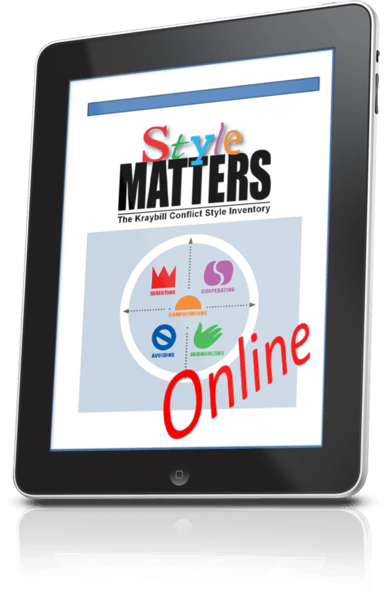 taking Style Matters Online. Instruct them to read their score report carefully and spend, say, 20 minutes clicking links in the report to resources that interest them on the Riverhouse website. (These include a tutorial, summaries of strengths and weaknesses of each style, essays on anger management, apology, conflict and culture, and much more.) Pick out an exercise from the ideas below and assign it to your students to do on their own. I invite you to adapt and present them as your own.
taking Style Matters Online. Instruct them to read their score report carefully and spend, say, 20 minutes clicking links in the report to resources that interest them on the Riverhouse website. (These include a tutorial, summaries of strengths and weaknesses of each style, essays on anger management, apology, conflict and culture, and much more.) Pick out an exercise from the ideas below and assign it to your students to do on their own. I invite you to adapt and present them as your own. I would love to hear your ideas for effective learning experiences outside of the classroom! Please send them to me at center@riverhouseepress.com. With your permission, I’ll publish the best ones here.
I would love to hear your ideas for effective learning experiences outside of the classroom! Please send them to me at center@riverhouseepress.com. With your permission, I’ll publish the best ones here. 



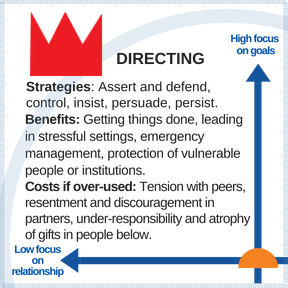 framework
framework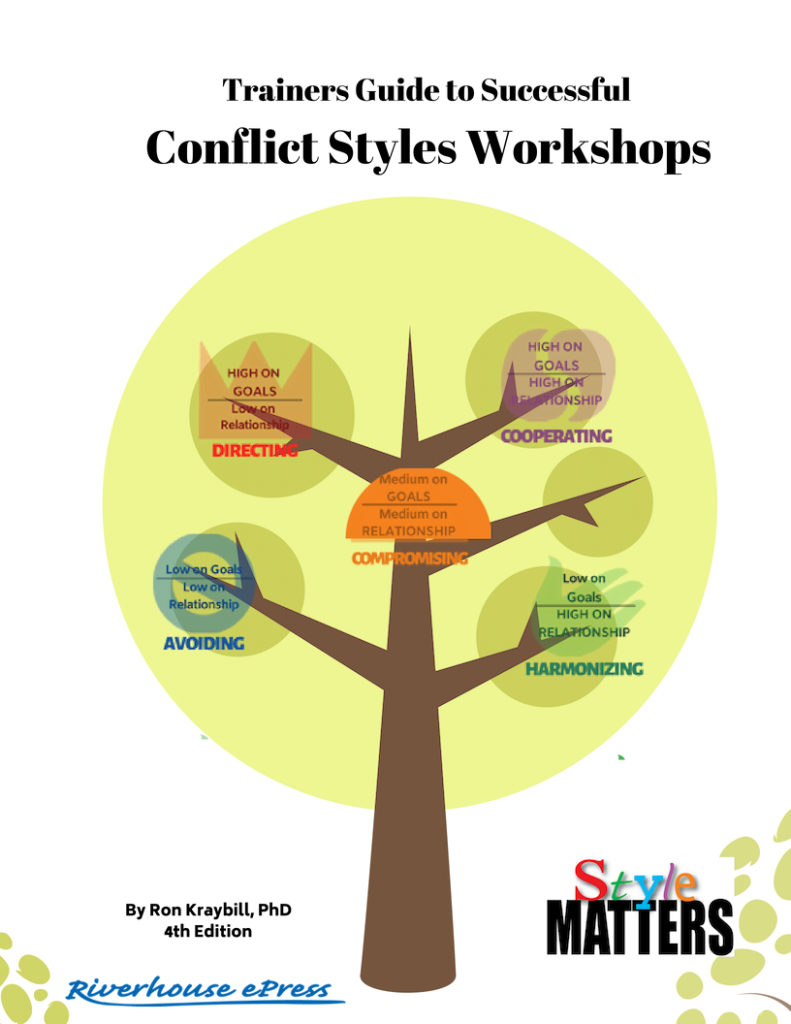
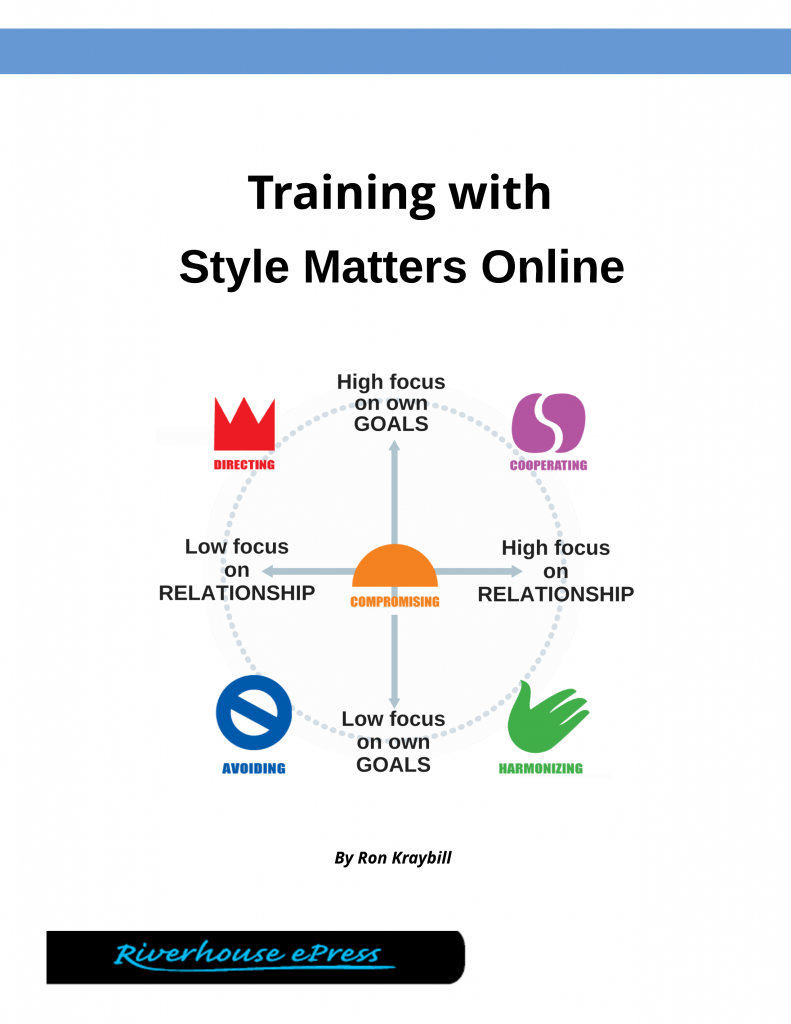 provides detailed guidance on all aspects of conflict styles training, this short guide focuses narrowly on work with the online version of Style Matters. If refers often to the full guide, so you should have both.
provides detailed guidance on all aspects of conflict styles training, this short guide focuses narrowly on work with the online version of Style Matters. If refers often to the full guide, so you should have both. 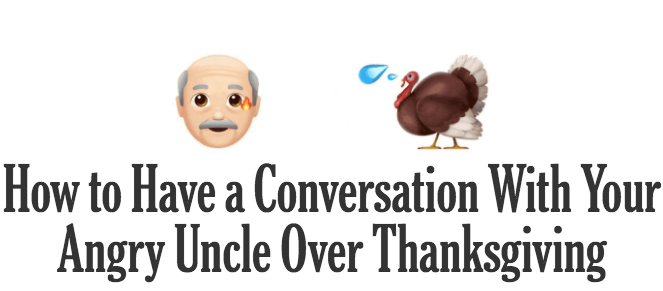
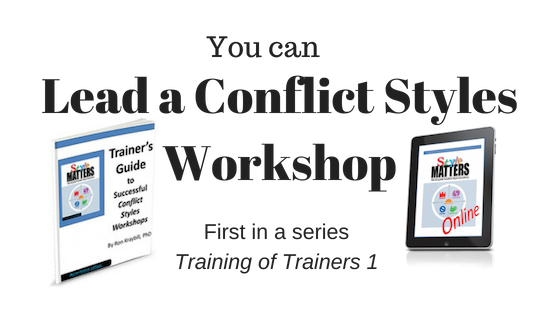
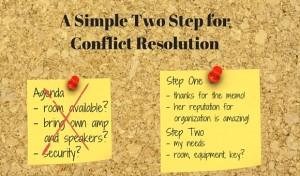
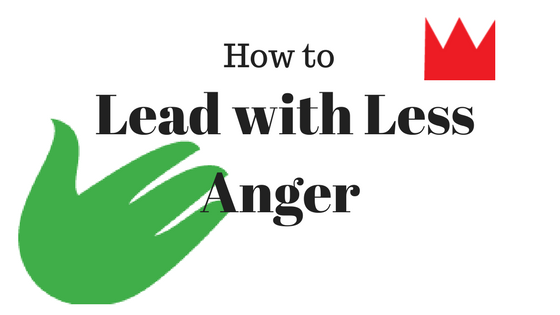
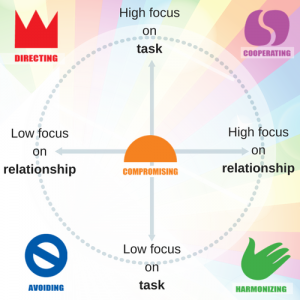
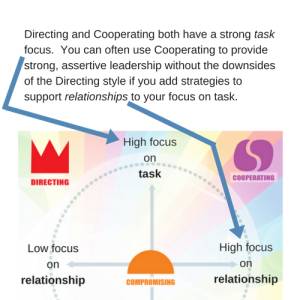
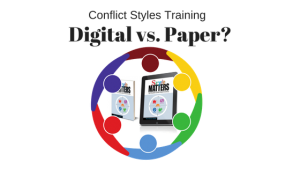 and face-to-face training. But after Style Matters had been out in paper for several years, demand for an online tool drove us to also develop a digital version. That was an eye-opener for me.
and face-to-face training. But after Style Matters had been out in paper for several years, demand for an online tool drove us to also develop a digital version. That was an eye-opener for me.